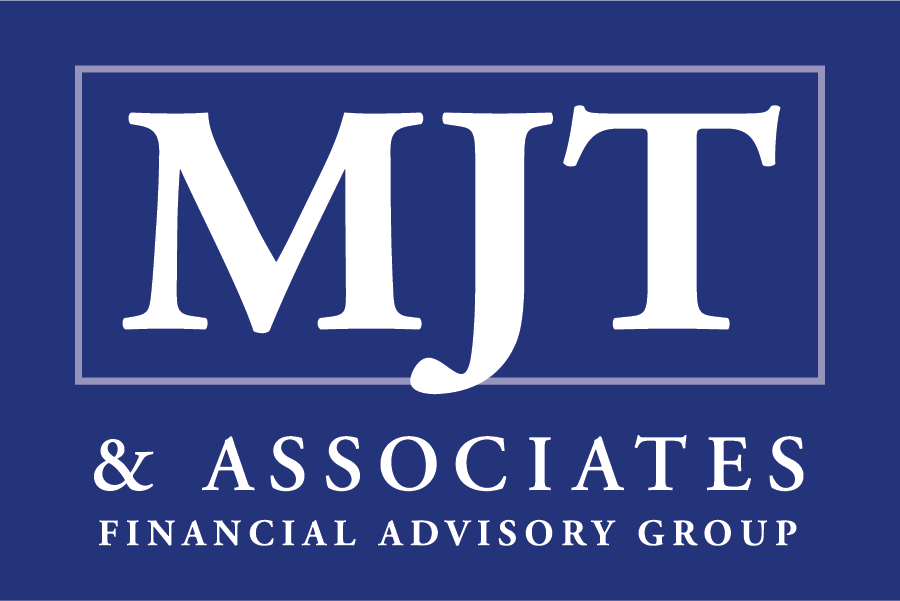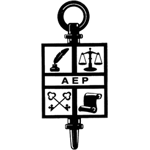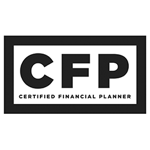As small business owners, we understand the thrill of entrepreneurship and the challenges that come with it. One of the most critical aspects of running a successful business is mastering the art of financial planning. At MJT & Associates, we've guided countless small business owners through the complexities of financial management, and we're here to share our expertise with you. Let's embark on a journey to unlock the secrets of financial planning that will pave the way for your sustained success.
Understanding the Importance of Financial Planning for Small Business Owners
Picture this: You're at the helm of your business, navigating through unpredictable economic waters. Without a solid financial plan, you're essentially sailing blindfolded. Financial planning isn't just about crunching numbers; it's about creating a roadmap for your business's future. It's the compass that guides you through tough decisions, helps you seize opportunities, and ensures your business not only survives but thrives.
Many small business owners we've worked with initially viewed financial planning as a daunting task. However, they quickly realized that it's the foundation upon which all other business decisions are built. A well-crafted financial plan provides clarity, helps manage risks, and opens doors to growth opportunities that might otherwise remain hidden.
The Key Components of a Financial Plan for Small Businesses
Now, let's break down the essential elements of a robust financial plan:
- Income Statement: This is your business's report card, showing revenue, expenses, and profit over a specific period.
- Balance Sheet: Think of this as a snapshot of your business's financial health at a given moment.
- Cash Flow Statement: This tracks the movement of money in and out of your business.
- Break-Even Analysis: Determines the point at which your business covers all its costs and starts making a profit.
- Financial Projections: These are educated guesses about your business's future financial performance.
Each of these components plays a crucial role in painting a comprehensive picture of your business's financial landscape. They work together like instruments in an orchestra, creating a harmonious financial symphony when properly managed.
Setting Financial Goals and Objectives for Your Small Business
Goal-setting is where the rubber meets the road in financial planning. It's about translating your business dreams into tangible, measurable objectives. We always advise our clients to use the SMART framework:
- Specific: Clearly define what you want to achieve.
- Measurable: Establish concrete criteria for measuring progress.
- Achievable: Set goals that are challenging but attainable.
- Relevant: Ensure goals align with your overall business strategy.
- Time-bound: Set a timeframe for achieving each goal.
For instance, instead of a vague goal like "increase profits," a SMART goal would be "increase quarterly profits by 15% within the next fiscal year through a combination of cost-cutting measures and expanded marketing efforts."
Remember, your financial goals should be a mix of short-term (e.g., improving cash flow within six months) and long-term objectives (e.g., expanding to a new location within five years). This balanced approach ensures you're addressing immediate needs while also planning for future growth.
Budgeting and Cash Flow Management for Small Business Owners
Budgeting is often seen as a restrictive practice, but we like to think of it as giving your money a purpose. A well-planned budget is like a GPS for your finances, guiding you toward your goals while helping you avoid financial pitfalls.
Start by categorizing your expenses:
- Fixed costs (rent, salaries)
- Variable costs (raw materials, utilities)
- One-time expenses (equipment purchases)
Next, project your income based on historical data and market trends. The gap between your projected income and expenses is your estimated cash flow.
Cash flow management is the lifeblood of your business. We've seen too many promising businesses falter not because they weren't profitable, but because they ran out of cash. To maintain healthy cash flow:
- Invoice promptly and follow up on overdue payments
- Negotiate favorable payment terms with suppliers
- Consider offering discounts for early payments
- Maintain a cash reserve for unexpected expenses
Remember, profit doesn't always equal cash in hand. You might be profitable on paper but still face cash flow issues if your money is tied up in inventory or unpaid invoices.
Effective Expense Management Strategies for Small Businesses
Controlling expenses is crucial for maintaining profitability. Here are some strategies we recommend:
- Regular expense reviews: Conduct quarterly audits of all expenses. You'd be surprised how many unnecessary costs can creep in over time.
- Embrace technology: Invest in accounting software and apps that can automate expense tracking and provide real-time insights.
- Negotiate with vendors: Don't be afraid to shop around or ask for better rates from your current suppliers.
- Consider outsourcing: For non-core functions, outsourcing can often be more cost-effective than maintaining in-house staff.
- Energy efficiency: Simple changes like switching to LED lighting or programmable thermostats can lead to significant savings over time.
- Lean inventory management: Excess inventory ties up cash. Implement just-in-time inventory practices where possible.
Remember, the goal isn't to cut costs indiscriminately, but to optimize spending to align with your business goals.
Tracking and Analyzing Financial Performance Indicators
Key Performance Indicators (KPIs) are the vital signs of your business's financial health. Some essential KPIs for small businesses include:
- Gross Profit Margin: (Revenue - Cost of Goods Sold) / Revenue
- Net Profit Margin: (Net Income / Revenue) x 100
- Current Ratio: Current Assets / Current Liabilities
- Inventory Turnover: Cost of Goods Sold / Average Inventory
- Customer Acquisition Cost: Total Marketing Expenses / Number of New Customers
Regularly tracking these metrics allows you to spot trends, identify areas for improvement, and make data-driven decisions. We recommend setting up a dashboard that gives you a quick overview of your key metrics at a glance.
Tax Planning and Compliance for Small Business Owners
Taxes can be a significant expense for small businesses, but with proper planning, you can minimize your tax burden while staying compliant. Here are some strategies to consider:
Choose the right business structure: The structure of your business (sole proprietorship, LLC, S-Corp, etc.) can have significant tax implications.
- Take advantage of deductions: Keep meticulous records of all business expenses. Common deductions include home office expenses, vehicle use, and professional development costs.
- Timing of income and expenses: Depending on your tax situation, you might want to accelerate or defer income or expenses at year-end.
- Retirement planning: Contributions to retirement plans like SEP IRAs or Solo 401(k)s can provide valuable tax deductions.
- Stay informed about tax law changes: Tax laws are constantly evolving. Stay up-to-date or work with a tax professional to ensure you're taking advantage of all available benefits.
Remember, while it's important to minimize your tax burden, aggressive tax avoidance can lead to costly audits and penalties. Always ensure your tax strategies are legal and ethical.
Financial Risk Management for Small Businesses
Every business faces risks, but with proper planning, you can mitigate their impact. Here are some key areas to focus on:
- Insurance: Ensure you have adequate coverage for property, liability, and business interruption. Consider key person insurance if your business heavily relies on specific individuals.
- Diversification: Don't put all your eggs in one basket. Diversify your customer base, suppliers, and product offerings to spread risk.
- Emergency fund: Maintain a cash reserve to cover at least 3-6 months of operating expenses.
- Cybersecurity: In today's digital age, protecting your business's data and systems is crucial. Invest in robust cybersecurity measures.
- Succession planning: What happens to your business if you're unable to run it? Having a succession plan in place is crucial for long-term sustainability.
- Regular risk assessments: Conduct periodic reviews to identify potential risks and develop mitigation strategies.
Investing and Saving for Future Growth and Expansion
While managing day-to-day finances is crucial, it's equally important to plan for the future. Here are some strategies for investing in your business's growth:
- Reinvest profits: Consider allocating a portion of your profits back into the business for expansion or improvements.
- Research and development: Stay ahead of the competition by investing in innovation and new product development.
- Employee development: Investing in your team's skills and knowledge can lead to increased productivity and innovation.
- Marketing and branding: Building a strong brand can provide long-term returns through customer loyalty and word-of-mouth referrals.
- Technology upgrades: Staying current with technology can improve efficiency and open
Conclusion: The Impact of Effective Financial Planning on Sustained Success
As we've explored throughout this guide, mastering financial planning is not just a skill—it's a necessity for small business owners aiming for long-term success. At MJT & Associates, we've seen firsthand how a well-crafted financial plan can transform a struggling business into a thriving enterprise.
Effective financial planning provides clarity, helps manage risks, and uncovers opportunities for growth. It empowers you to make informed decisions, navigate economic uncertainties, and build a resilient business that can weather any storm. Remember, financial planning is not a one-time event but an ongoing process that evolves with your business.
By implementing the strategies we've discussed—from setting SMART goals and managing cash flow to mitigating risks and planning for growth—you're laying a solid foundation for your business's future. Whether you're just starting out or looking to take your established business to the next level, a robust financial plan is your roadmap to sustained success.
Don't let financial uncertainty hold you back. Embrace the power of financial planning and watch your small business flourish. Your entrepreneurial journey is unique, and with the right financial strategies in place, there's no limit to what you can achieve.











